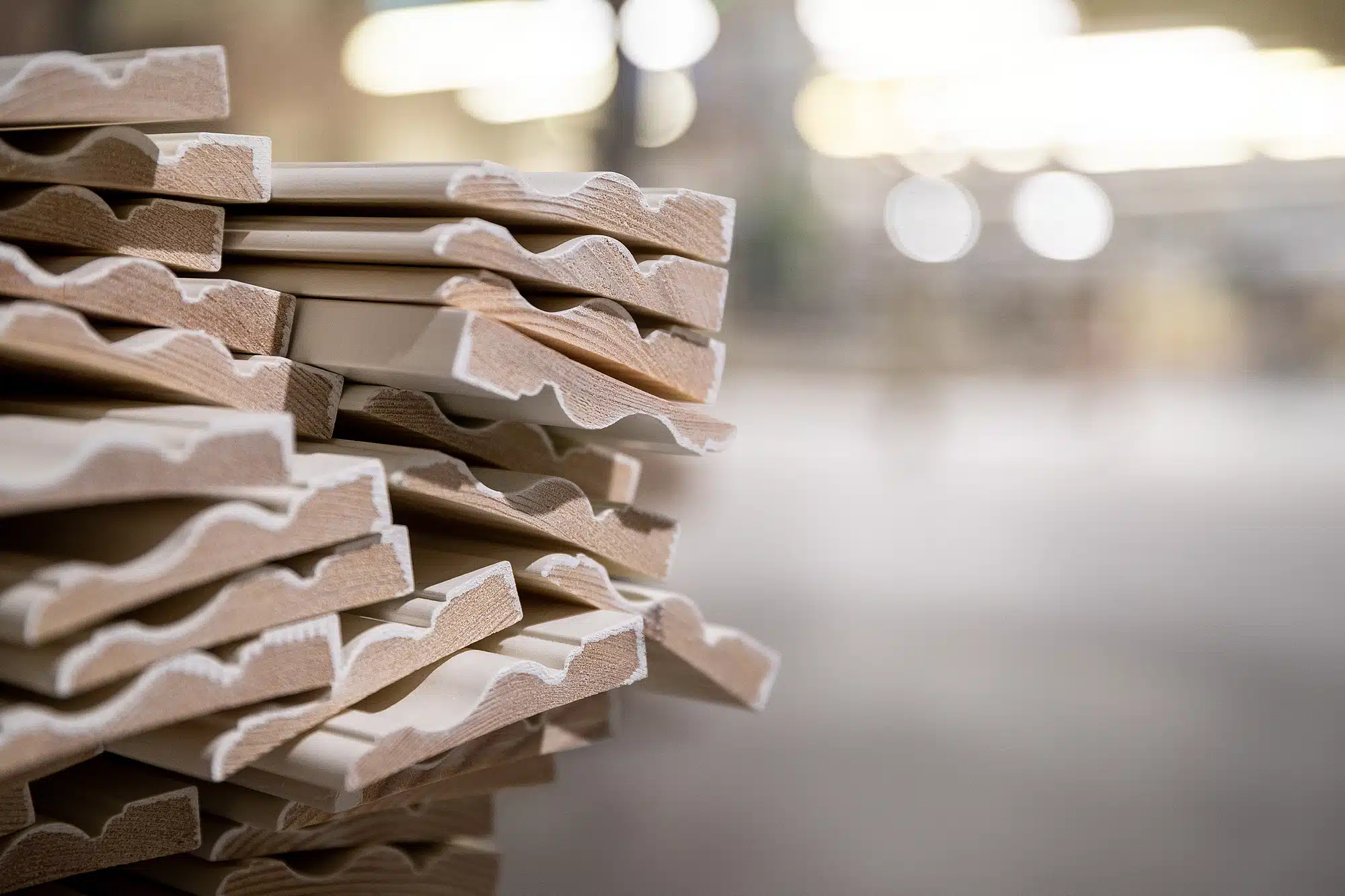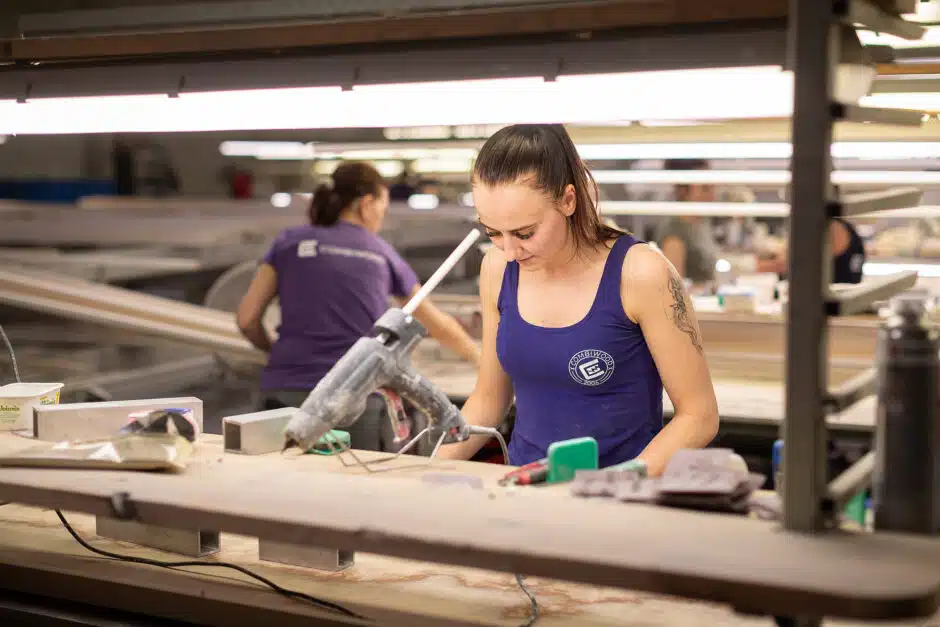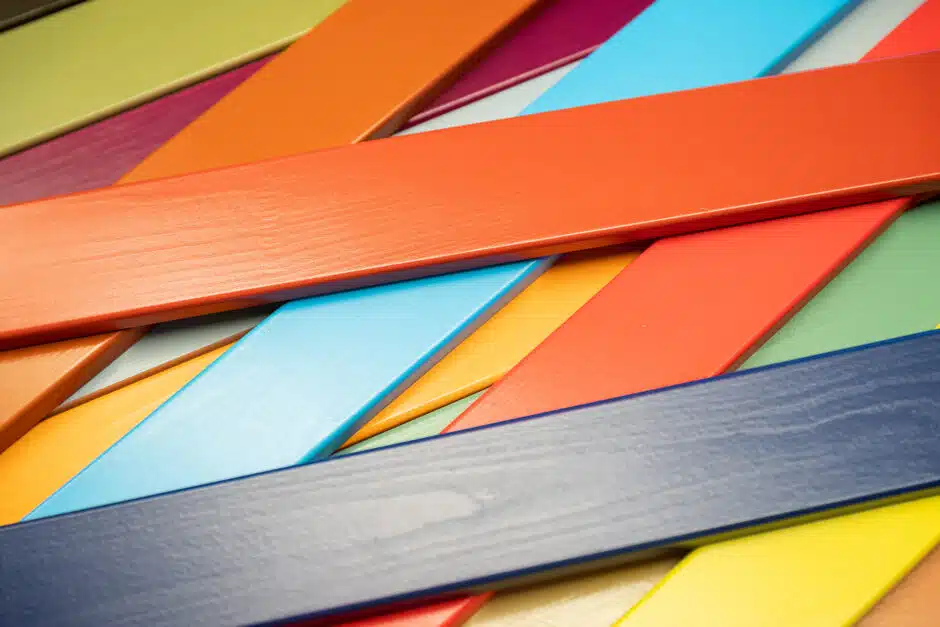It all begins in the forest. Our forestry company Iriscorp or another partner purchases a lot of mature pine, harvests the trees to be used and brings the required assortment to Combimill Sakala. There, the round logs are sawn to the required lumber size. It is very important to know the sawing pattern to achieve the best yield and the right quality. Experts with many years of experience work on this job at Sakala.
Once the lumber has been cut, it goes into the kiln where it spends 1-2 weeks, depending on the thickness, to bring the moisture content down to 12-14%. Finding the right drying regime is a precision science, as the required moisture content and quality must be achieved in the optimum time. There is a very high risk of spoilage if the right drying schedule is not in place. Cracks, warping, moisture retention, and other defects can occur.
After drying, manufacturing the moulding can start. Whereas in the old days, people waited for the tree to grow thick so that knot-free wood could be harvested from under the bark, nowadays this is achieved with engineering. To do this, the boards are taken from the Sakala sawmill to Vincom across the yard where finger-jointed timber is produced. This process enables us to remove various defects such as knots, resin pockets, splits, tears, and warping from the wood, as these can’t be present in the final product – the moulding.
First, the boards are calibrated on a planer and then sent through a scanner, which inspects the board from four directions and instructs an automatic cross-cut saw to cut out any defects. In this way, only defect and knot-free timber remains on the rest of the journey.
This optimization results in short, branch-free blocks 150-500 mm long.
To achieve the length required for the moulding, the blocks need to be reattached.
To do this, the blocks are fed into a finger jointing machine, where zig-zags are milled into the ends of the blocks and the blocks are glued together. This is how knotty lumber with its usual defects becomes a knot-free finger-jointed workpiece.
There are many nuances to the optimization process, however. As sawn timber is expensive, nothing can be thrown away, and a buyers need to be found even for lower quality material. Knotless glulam is used as raw material for making strips of moulding, while products with knots can be used in window casings in details that are hidden from view. The lowest quality timber is used to make pallets or packing material. Any residues from this are chipped and become raw material for pellets.
Finger-jointing gives us two results: firstly, knot-free wood, and secondly, the length of material we want. Logs come from the forest in very different lengths. Scandinavian customers expect strips of moulding in a length of either exactly 4.4 or 2.2 meters, and finger-jointing allows us to offer this.
The finished finger-jointed components are the input raw material for our moulding factory in Helme. Components are often made in multiples of thickness. Therefore, the first step in the manufacturing process is to split the glulam components into halves or thirds with a bandsaw. In this way, the correct dimensions of the workpiece are obtained.
The next stage in the production of the moulding is the planing line. These are expensive and sophisticated machines that allow the required dimensions to be achieved quickly and accurately. After planing, the mouldings are plastered with a special machine and any remaining minor defects are automatically repaired.
After plastering and moving through a drying oven, the strips are sorted and any strips that need to be repaired manually are separated. Because so much work has been put in and the material is expensive, it is important to repair every defective strip. Hand plastering is a difficult job that must be done with great care to ensure that no defects remain visible underneath the paint after finishing. We have to do this when there are resin pockets or tears left by planing that cannot be repaired by machine.
Once covered with a layer of plaster, the strips are passed on to the painting line. First, the plaster surface is sanded smooth and then the strip is covered with primer, which dries in a quick run through the oven. Now – before final finishing – a second sorting eliminates any defects that have been left unnoticed so far. If a defective strip is painted, it is a waste of materials and labor. Mouldings that are found to have defects are sent back for repair. Flawless mouldings, on the other hand, can move on to the top painting line.
The painting line gives the mouldings their final appearance. We mainly produce white mouldings, but many other shades are available. The process is similar for all of them. Each strip receives two coats of paint and at this point the product itself is finished. The work in the factory does not end there, however.
Each strip (yes, each strip, and there are thousands made at the factory every day) gets a barcode sticker put on it. This is so that the strip can be tracked in the various warehouse systems on its way from the factory to the end user up to the point where you scan in the barcode yourself at the self-service checkout in the DIY store.
Once the strips have been bar-coded, they are packed in mini bundles of several pieces by a laminator, which then receive a sticker identifying their contents. The mini bundles are then packed in large packs of a few hundred and are ready for dispatch to the customer.
To go through all these steps, the material for a single strip of moulding spends about a week in our moulding factory. The material also spends a similar amount of time in the sawmill and the finger-jointing plant, but this has to be added to downtime in various warehouses. It therefore takes at least a couple of months for the timber from the forest to become a finished strip of moulding.
Once the packs have been assembled and laminated, they start their journey to their new homes with the help of our transport partners. In addition to Estonia, our mouldings will be delivered to Sweden, Norway, Denmark, Germany, Switzerland, the UK and France. Now, as you admire your new mouldings, you’ll know that it’s the work of many different, clever people that’s brought them to you.


